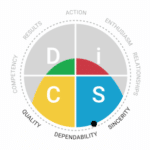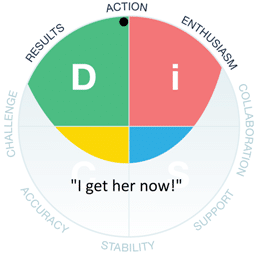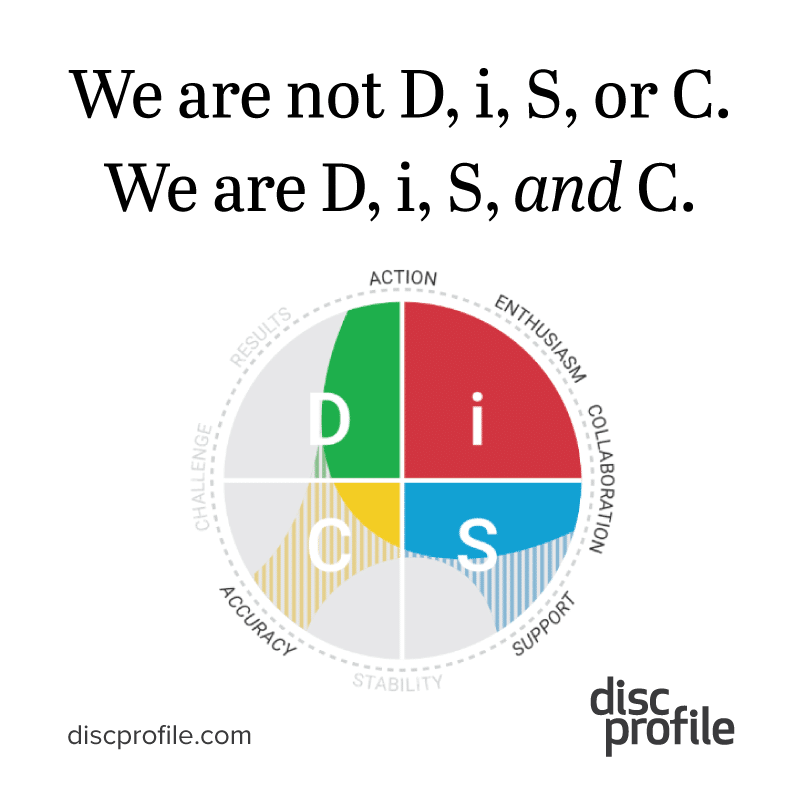DiSC is a great tool, but it can be misused even by those who are knowledgeable about it. Here are some issues to keep in mind when using this assessment.
Employee selection
We often see articles on how to use DISC as a selection or hiring tool, and while many assessments based on the DISC model can give you data you might want to use, none are predictive tools. Even an Everything DiSC® assessment can’t tell you if someone will make a great real estate agent or not. Even if you’ve had good results hiring accountants who are C style, that doesn’t mean the accounting department wouldn’t benefit from having an i-style accountant on staff.
 People are adaptable and can perform well in roles that might seem against their type. For example, Everything DiSC® Sales includes information for each personality style, because each style has its strengths and challenges. Each style can be great at sales. Plus, each style benefits from adapting to the style of their customer.
People are adaptable and can perform well in roles that might seem against their type. For example, Everything DiSC® Sales includes information for each personality style, because each style has its strengths and challenges. Each style can be great at sales. Plus, each style benefits from adapting to the style of their customer.
Interviewers may want to take a personality profile to become aware of what their own biases might be. People respond well—and sometimes preferentially—to people most like themselves, and many hiring agents want to hire for diversity, not conformity.
Everything DiSC can be helpful in understanding how a candidate might mesh with the culture of the organization or working team. DiSC doesn’t predict success, but it is a window into a candidate’s communication style and behavior. Thus it can be helpful in making an offer pitch and when onboarding.
Trying to game the test
We know that people sometimes search for ways to change their DISC or DiSC profile or worry about getting the DiSC result they want or think they need. Employers using this assessment need to guard against this. Make it clear to the participant why the assessment is being given and how it will be used. People need to trust that there are truly no wrong answers; otherwise, their answers might reflect what they think you want more than who they actually are.
Labeling or making superficial judgments
Once we’ve learned about DiSC we have a tendency to try to guess the styles of others. This can be helpful when we want to adapt our styles to another’s needs in situations such as customer service transactions. But for a sustained relationship, such a hasty judgment can be wrong or even hurtful.

For example, you might listen to a very dynamic speaker and assume that she has an i style because of her energy level and enthusiasm. You might see her quickly leave after the presentation and assume that she didn’t want to engage with her audience. You might even take offense. However, she might have been a C-style person who used a high amount of energy to flex into an i-style role temporarily. She just needed to reenergize before interacting more with you. She wasn’t trying to be rude, but to take care of her own needs.
We have evolved to adapt to our environment and adapt our environments to us. If your workplace rewards only one style of behavior, then most employees will try to display that style. For example, you might have a strong leader who is an S style and works in a service organization that rewards being inclusive and encourages people to share their feelings. Your coworker might be a D style and still be able to adapt his public behaviors to match the culture. Until you get to know him better, you might misunderstand him.
Everything DiSC should be used to open conversations about what motivates or stresses us, about how we can better communicate and get through conflict productively. No one wants to be labeled and limited by the letter combination of their assessment results. We want to be understood, not stereotyped.
Remember that we’re each a unique combination of styles. That’s why you see a dot within a circle. Having a Di style doesn’t mean you can’t flex into an SC response. The Everything DiSC circle and dot image came about as a way to show the strength of one’s inclination toward a style. The shading helps people understand the areas on the DiSC map where they might have difficulty stretching.
Remember that DiSC measures a limited number of personality traits. It doesn’t measure, for example, one’s sense of humor, how good you are with money, loyalty, education, ethics, etc. DiSC reflects back to us a part of ourselves, but not our entire selves, nor our worth.
Also be aware that some DISC tests are written or scored differently and with various levels of validity. Therefore, it’s possible that someone was typed as an S style on one DISC test and an Everything DiSC profile might discover that they actually have an i style with an extra priority of Stability.

Excusing bad behavior in yourself and others
I’ve seen a few tweets where someone will call out a coworker with a comment like “What a surprise! She’s a D. Of course she’s going to steamroll everyone.” Maybe you’ve heard someone say something like, “You know I’m an S and don’t like confrontation. Can’t you make that call instead of me?”
“I gotta be me” might be true, but you don’t have to display bad behavior. Everyone is a blend of all the styles and while it might take me (a CD style) a lot of energy to get up to lead a cheer, that doesn’t mean I can’t do it. Having an iS style doesn’t mean you can’t take on a challenge. Having a D style doesn’t excuse you from showing sympathy for someone’s loss or being diplomatic. Understanding your DiSC style is not an excuse for acting in a way that you shouldn’t, nor abdicating responsibilities in the name of your style.
“One and done” training
If your organization really wants to make the most of the Everything DiSC assessment(s), you can’t expect people to completely digest their own style and how to work with others in just one session. You want them to be able to practice using their new knowledge and insights. If they aren’t using the model to improve their communication, why did you offer the assessment? The most successful trainers and coaches return to DiSC regularly. This might be with the Catalyst learning platform, posters, Everything DiSC Comparison Reports, MyEverythingDiSC, videos, or additional follow-up training.
Everything DiSC is a tool trusted by over 1 million people every year. Be sure you’re using it most productively.

